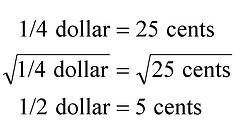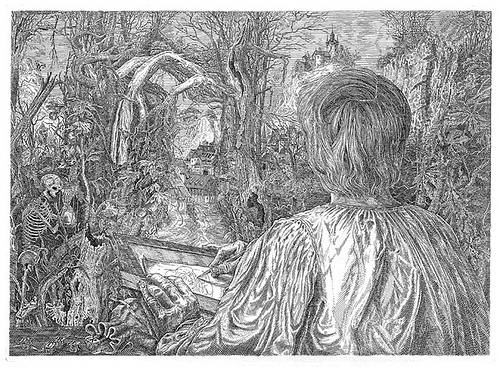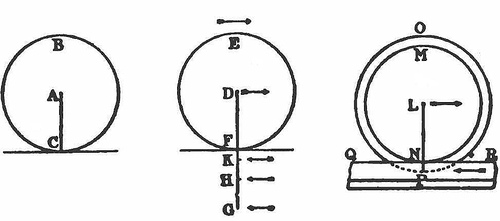windbroach
n. an inferior fiddler
Month: October 2007
Earthquake Lights
Witnesses reported seeing “immense columns of flame” shortly before the earthquake that destroyed the Greek cities of Helike and Boura in 373 B.C. Numerous accounts since then have told of aurora-like lights accompanying earthquakes.
They were thought to be a myth until photographs were taken during a Japanese quake in the 1960s, and several corroborating videos have appeared since then. But why they occur is still a mystery.
The Declining Dollar

Rimshot
“I saw a big rat in my cook-stove and when I went for my revolver he ran out.”
“Did you shoot him?”
“No. He was out of my range.”
— The Pun Book, 1906
“Singular Accident”
On the 25th of February 1823, a span of horses with a sleigh and lumber box, broke away from the five mile house on the old Schenectady road, and were not heard of until the 17th of March inst. when they were found in a swamp, about a mile and a half from the four mile house. One of the horses, having been thrown down, had, in this situation, eat off half the neck yoke, and the end of the tongue of the sleigh. He was found dead. The other was alive, having remained twenty days, during the most inclement part of the season, without food or water, except what he obtained from browsing in the short space of a hundred feet. Both horses were still in the harness when found, and the articles in the sleigh were found as they had been left.
— “American paper,” cited in The Cabinet of Curiosities, 1824
“Dürer in the Forest”

Etching by Hungarian artist István Orosz.
Oscar Wilde said, “Life imitates art far more than art imitates life.”
Unquote
“There never was a child so lovely but his mother was glad to get him asleep.” — Emerson
Numerical Pangrams
A pangram is a sentence that uses each letter of the alphabet exactly once:
CWM FJORD BANK GLYPHS VEXT QUIZ.
“Carved symbols in a mountain hollow and on the bank of a fjord irritated an eccentric person.” They’re a bit awkward in English, so here’s the same idea using numbers. Each of these (valid) equations uses the digits 1-9 exactly once:
42 × 138 = 5796
27 × 198 = 5346
39 × 186 = 7254
48 × 159 = 7632
28 × 157 = 4396
4 × 1738 = 6952
4 × 1963 = 7852
Even better: The numbers 3 and 51249876, between them, use all 9 digits — and so does their product, 153749628.
Contrary Motion

No matter how fast a train is moving forward, certain parts of it are moving backward:
The flanges of its wheels.
Fenetix
A “sonic alphabet” composed by Harry Mathews:
Hay, be seedy! He-effigy, hate-shy jaky yellow man, O peek! You are rusty, you’ve edible, you ex-wise he!
Read it aloud. In 1886, J.H. Lundgren composed this sentence for Notes and Queries:
Oh Ellen, pea jay, ivy effigy, double you are! empty essay! why? you see age decay; be excused!
“It will be observed that the actual sounds (names) of the twenty-six letters of the alphabet are here represented by the several syllables of the eighteen words employed, and with the exception of ‘age’ for H, almost correctly. A perfectly faultless rendering may perhaps not be attainable.”
